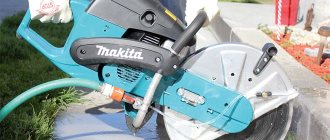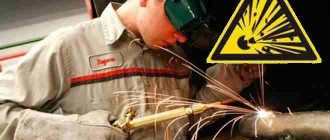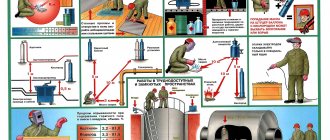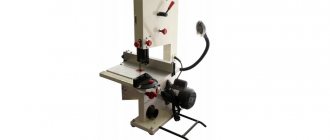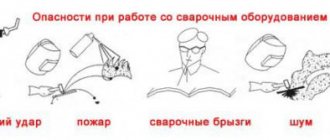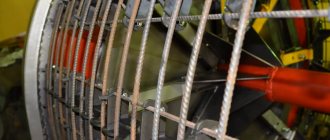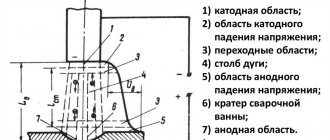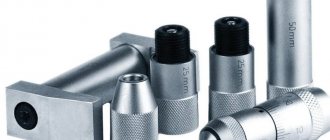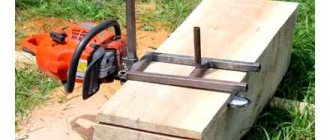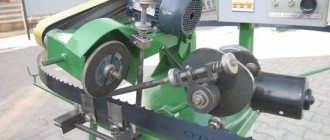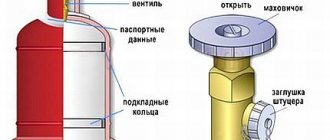A jigsaw is an electric saw that is an indispensable item in every home. With this tool you can saw metal structures, wooden objects, plastic and tiles. Unlike a standard saw, using a jigsaw you can cut out the most intricate shapes - circles, triangles, stars, in general, almost everything you can imagine. However, with such extensive possibilities, a problem often arises in moving the jigsaw smoothly so that the resulting lines correspond to the planned ones. How to cut smoothly with a jigsaw? Let us help you figure this out.
Jigsaw device
The following short introduction was compiled to answer the question “What is a jigsaw” and “How does it work.”
Since this is only a superficial analysis of the tool, we will not dive into the technical depths, but will only touch on the external functionality. We assure you that the information provided will fully clarify the general understanding of the concept of the device and form a clear picture of the principle of its operation. First of all, you should pay attention to the shapes of jigsaws. They can be staple-shaped or straight with a mushroom-shaped handle. The first option is the most common and very convenient, but for the sake of fairness it is worth saying that working with a mushroom-shaped handle can be quite comfortable (especially in figured cutting).
Regardless of the shape of the handle, each jigsaw has a start button and its lock (for operation without holding). Also, any device of this type has a sole, which can be stamped or cast (on more expensive models). For miter cuts, the sole can be tilted using a key or lever installed on professional devices. Saw blades, making an average of 50 strokes per second, are installed in a special clamp, which can be a block, screw or quick-clamp.
Most modern models are equipped with a pendulum function (to speed up cutting), the regulator of which is located on the left side of the body, next to the file. If we look at the structure of a jigsaw in more detail, we will notice that some models may be equipped with a backlight, a dust collector, a laser pointer and other useful devices. We described these and other functions in detail in a separate article.
For more experienced users who understand the structure of power tools, the following jigsaw diagram has been laid out. The model of a domestic manufacturer presented in analysis clearly demonstrates all the components of the “filling” of most standard devices.
Guide rail for jigsaw
auxiliary devices plunge-cut saw
The jigsaw guide is a simple device, at first glance, similar to a large metal ruler or rule. The main difference between the tire and the above devices is a special groove along which, like on rails, the sole with a jigsaw mounted on it moves. Most guides have rubberized strips that prevent sliding on the surface of the material, and for additional fixation, they are attached with small clamps. The average length of such devices is from 1.5 to 3 meters, and can be increased by another, similar ruler, using an adapter.
modern manufacturers
How to insert a file into a jigsaw
With intensive use or when working with different types of materials, it often becomes necessary to replace the saw blade. The types of saw blade mounts may differ on different models of jigsaws. To give the most detailed answer, we will consider each type of clamp separately. Block clamp
. Perhaps the simplest fastening of a file in a jigsaw, most often found in inexpensive copies. Consists of a block with two screws installed on the front side of the tool. It is universal, as it can fix saw blades with any shanks. When tightening this fastener, be careful and ensure that the file is level. To do this, tighten the screws evenly, a little each, and ideally check the evenness of the installed blade with a square.
Screw clamp
. A more convenient and reliable mount, although it has only one screw installed on the side. To figure out how to change a file on a jigsaw with this type of clamp, you don’t need to be a rocket scientist. All that is required is to loosen the fastening element with a screwdriver or wrench, remove the old file, install a new one and screw it back. The main thing is not to tighten the screw too much, otherwise the blade may “play” during operation.
Quick-release fastening
.
The most convenient clamp for a file, found on more or less expensive models. Does not require a wrench or screwdriver and is only suitable for blades with certain types of shanks (depending on the tool model). To install a file, just pull back the special lever with your finger and insert a new blade into the groove. There are several types of levers: frontal, lateral and radial (demonstrated in the next video). Now that you know how to properly insert a file into a jigsaw, it’s time to move on to other, more practical things.
Fastening material
In order for the cutting line to be smooth, the working surface must be as stable, rigid and durable as possible. When working at home, this can be an ordinary table with reliable legs and a flat tabletop.
The board is fixed to the surface using clamps secured on both sides with moderate force. The sheet to be processed must be positioned in such a way that the tool does not rest against the surface during operation. To prevent pressure from being applied to the saw during the cutting process, you can weigh down the protruding edge hanging from the surface using an attached weight.
How to cut a circle with a jigsaw
Sometimes, many beginners and even experienced owners of electric jigsaws ask the question “How to make a perfectly even circle with this tool.”
Tasks for accurate radius cutting do not appear often, and require a steady hand, ingenuity or financial expenditure from the operator. Below, we have given 3 ways to cut a circle with a jigsaw, starting from the most banal and ending with a rather interesting solution. With your own hands
. The most obvious, but very controversial option, for more or less experienced craftsmen. The speed in this case should be minimal, and it is better to install a vacuum cleaner near the workplace to promptly remove sawdust from the marking line. The evenness of the cut, in this case, depends only on the experience of the operator.
Compass
. Some brands of electric jigsaws can be equipped with additional auxiliary devices, one of which is a compass. Unfortunately, not every tool model presented in the store can be improved through a simple purchase, since the equipment from one manufacturer simply will not fit another. Not all manufacturers provide for the possibility of expanding the functionality of the devices they produce, so choosing a compass for a jigsaw of your particular brand can be quite problematic. By the way, such trinkets cost between 1000 and 7000 rubles.
Homemade compass
. Perhaps the best option for the home handyman. To create such a device, you only need a sheet of plywood of the size you need, a little PVA glue, and a dozen nails or clamps. With a device assembled from these materials, you can easily cut a hole in the countertop for a round sink with a jigsaw, cut out an opening for a decorative window, and make many perfectly even holes wherever you want. You can watch the detailed process of making a jigsaw compass in the video below.
Working with wood
Despite its solid functionality, an electric jigsaw is most often used to work with wood and its derivatives. The use of this device is always justified: from rough cutting of tens of meters of chipboard or timber, to delicate processing of laminate or plywood.
There is nothing tricky about how to work with a jigsaw: you press the start button and start processing the selected material. The most important thing is to carry out the work cleanly, evenly and as necessary, without chips. To make working with a jigsaw on wood successful, it is enough to know a few simple rules. Speed
. When working with wood, the maximum number of revolutions is permissible. If you need a more even cut, without chips, the speed is reduced. The optimal speed mode is set depending on the material being processed. If excess chips form on the surface, it is better to reduce the speed or change the saw blade.
Files
. For rough cuts and thick wood, a saw with large teeth with an average pitch of 4 mm is suitable. More delicate straight cutting operations are best carried out with a blade with finer teeth and reverse sharpening is better. For shape cutting, it is better to use a thin file with large teeth.
Cut without chips
. When an electric jigsaw is used to work with wood and its derivatives, the cutting line is almost always accompanied by unpleasant chips that spoil the overall appearance of the product. This defect is especially noticeable and undesirable on decorative and facing materials. Fortunately, there is a very simple and effective solution to this problem, called an “Anti-Splinter Liner”.
This compact plexiglass device is installed in the sole of some jigsaw models and prevents the saw blade from tearing out pieces of material during operation. It should be noted that this method provides a clean cut only with files whose teeth are directed upward. Unfortunately, not every manufacturer produces such inserts, and they are not universal.
If such an improvement is not provided for your jigsaw model, you can make it yourself from a piece of plywood or plexiglass. The video below “how to work with a jigsaw on wood without chipping” clearly demonstrates the process of making such an improvised liner.
A little trick. If you need to make a clean cut, but there is no liner and it is not possible to make your own, ordinary tape can come to the rescue. Just stick a strip along the cut line and it will be much neater.
Features of cutting straight elements
Despite the fact that this type of work is one of the most common, if there is a lack of experience, difficulties may arise in how to evenly saw off any element with a jigsaw. It is recommended to opt for a file with a wide blade, designed for straight cutting, in order to better maintain the marking line. To ensure an even cut, the presence of the “soft start” function plays an important role. In this case, the tool begins to gain momentum gradually, making the jigsaw better controllable at the initial stage of cutting.
During work, you should not make excessive efforts to move the jigsaw forward, otherwise this will lead to failure of the file or tool mechanisms. A worn-out blade should be replaced immediately, since a dull file causes increased load on the electric drive. The workpiece to be cut must be securely fastened.
You can use a rip fence or guide bar to make straight cuts.
Sawing with a guide bar
First, the workpiece must be marked. After that? By installing the jigsaw in a special shoe, and then the shoe in the tire, the tool is positioned along the cutting line.
By placing the tool blade exactly along the cutting line, the guide bar is attached.
The tool is put into operation and guided along the tire. It depends a little on the operator. The quality of the cut will be much more influenced by the quality of the file and the jigsaw itself.
There are rails with clamps that allow you to make both straight cuts and angled cuts.
Sawing with a rip fence
A parallel fence often comes complete with a jigsaw, but regardless of this, almost all models have a slot in the sole for attaching a parallel fence rod.
It is possible to make a high-quality cut using this device only in the following cases:
- The supporting plane along which the shoe will move must be level and parallel.
- The jigsaw must be of high quality and resistant to being pulled to the side.
- The rip fence itself, i.e. its rod and shoe, must be strong and rigid.
- The operator must press the shoe firmly against the supporting surface when moving the tool.
Metal cutting
Not every file can cope with the strong structure of metals such as steel and even aluminum. To make your work with this material most effective, just follow simple rules.
- Set the minimum frequency of saw strokes. Unlike wood, where working at maximum speed is permissible, the dense structure of the metal will simply dull saws even with the strongest teeth. In this case, the presence of a regulator will be very useful, which will eliminate the need to buy a special electric jigsaw for metal.
- Use saw blades marked HSS (High Speed Steel). There are many types of canvases, and before purchasing, you should have a clear understanding of the thickness and density of the material you will be working with. For soft, sheet aluminum, the usual T118A is suitable, and for cutting steel, 3-6 cm thick, a T118B metal jigsaw file is suitable. Where is the first letter “T”, the name of the shank, which may not fit your instrument (more details about fasteners are written above).
Reasons for chipping
If you observe the process of chipping, you will be able to find a pattern - when you make a cut from below, the teeth of the saw do not finish the material and chips do not occur when leaving the material.
If the process occurs from the bottom up, then the teeth cling and a fracture results. In the wooden material, fibers that are located nearby begin to cling, and if you cut the laminated chipboard, splinters appear and the coating deteriorates. If you try to saw two layers of laminated chipboard at the same time, the layer located below will be sawed very well, because the layer located on top will resist the appearance of chips.
Please note that the increase in processing accuracy is helped by the “soft start” option, in which the electric jigsaw gradually begins to pick up speed, and the cutting itself will occur as it should. The tool will advance slowly, and you should continuously visually monitor the position of the cutting point, as well as the marking.
Plastic cutting
A fairly fragile and at the same time elastic (depending on the purpose) material, which also has a fairly low melting point. To understand once and for all how to properly cut plastic with a jigsaw, you should know only 2 simple rules.
- It is better to keep the cutting speed below average. Of course, plastic does not have the hardness of metal to deform the teeth of a saw blade, but a high stroke rate can simply melt it.
- There are special files for working with this material, but if they are not available, you can use standard ones for wood or metal. Suitable files for cutting are T101A (where A is a small tooth), T101B (B is a larger tooth) and T101X (X is universal for wood, plastic and metal).
Sawing with a saw table
The design of the table makes it much easier to work with a jigsaw, especially when cutting out elements of round, oval or complex shapes. You can buy such a table or make it yourself.
The tool is securely fixed on the underside of the tabletop, with the blade facing up.
Switching on and off is carried out using buttons located on the side of the table.
In this case, the operator does not move the tool itself, but the workpiece in which the sawing is performed.
This machine allows you to better control the workpiece and follow the marking line. As when working with a jigsaw, you should avoid putting too much force on the blade by the object being processed.
Safety precautions
Being even the most experienced craftsmen who have studied the tool inside and out, we, by chance, can be exposed to harmful influences during its operation. We are also talking about banal cuts, severed limbs, loss of vision, and less predictable effects associated with hearing loss and nervous system disorders with all that entails. It may seem that safety rules when working with a jigsaw are mostly needed by professionals who work with this device for several hours a day. We recommend that everyone try to follow the rules below at all times.
- Protective means. Safety glasses, gloves, respirator, earmuffs and a hat if the operator has long hair.
- Safety precautions with an electric jigsaw strictly prohibit using the tool while under the influence of alcohol or drugs, as well as under the influence of medications that affect attention and concentration. Stress or sleepiness can also cause injury.
- Before use, check the condition of the electric jigsaw. Make sure that there is no obvious damage to the cable or device body. Holding the jigsaw suspended, turn it on and press the start button to check the serviceability of the mechanism.
- When using an electric jigsaw, place your free hand to the side of the direction of the tool, but not in front of it. Do not point the jigsaw sideways or towards you. The movement of the tool during work should be directed only away from you. Make sure that the electrical cable does not get caught under the running saw blade.
- Upon completion of work, unplug the jigsaw, clean the body of sawdust and check for damage. Do not leave the tool on the floor, but put it in a dry and preferably ventilated place.
article from the Rating section
- 80
Power tools Carpentry tools (for wood) For working with metal Tools for ceramics
Save this page on your social media. network and return to it at any time.
ADD A COMMENT
